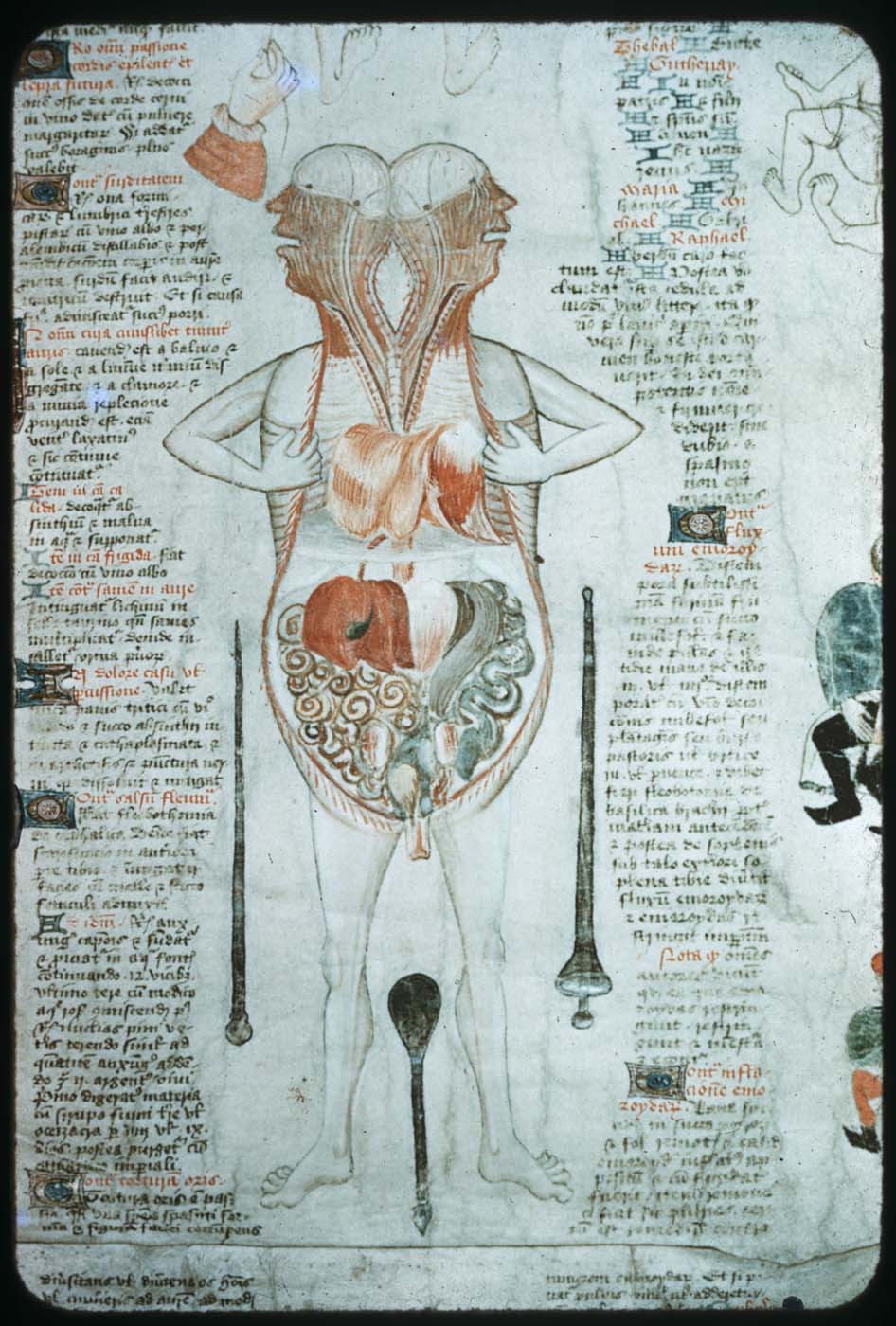
While the frontal approach to anatomical illustration exhibited in the Five/Nine-Figure Series and Guido da Vigevano’s work is most dominant, an alternative, sagittal approach emerged in the medieval period and survives in a few examples. Seemingly pioneered by the French surgeon Henri de Mondeville (c. 1260-1320), these images “unzip” the body from skull to genitals to reveal the contents within. In order to confront the fact that some organs obstruct the view of others, the approach is applied to both the front of the body (through the nose and navel) and the rear (along the spine). The engaging version pictured here—from an early 15th century manuscript of a text that contains no relevant anatomical section—offers fairly abstract and imaginative depictions of the organs and their positions. The cadaver obligingly opens his skin “coat”, the edges of which drip with blood, offering a delightfully dissonant image of cheerful gore.